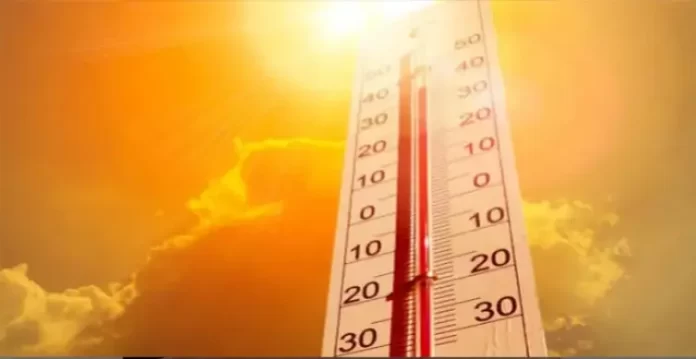As intense rains bypassed Hyderabad on Tuesday, residents yearned for relief from the city’s scorching temperatures. While neighboring districts rejoiced in a refreshing downpour, Hyderabad residents faced another day of high temperatures.
Dark clouds loomed over the city as dawn broke on Tuesday, raising hopes of much-needed rain. The anticipated showers, however, eluded the entire city, much to the dismay of the people of Hyderabad. The morning remained cloudy, providing some relief, but the oppressive heat reappeared as the day progressed.
Meanwhile, Telangana’s northern and eastern regions experienced a deluge in the early hours of the day. The Nalgonda district received the most rain, with Guurampode receiving an impressive 73.3 mm of rain until noon. The rain provided much-needed relief to the residents, who had been dealing with the scorching temperatures for several days.
Gudapur received 52.3 mm of rainfall, closely trailing Guurampode, while Chandur and Kanagal in Nalgonda district received 47.8 mm and 41.8 mm, respectively.
Other districts that received significant rainfall included Khammam, Peddapalli, Warangal, Hanumakonda, Suryapet, and Nagarkurnool. The refreshing showers provided relief from the scorching heat in these areas.
The mixed weather pattern of rain and heat is expected to continue until Wednesday. Meteorologists predict that rains will take a back seat starting Thursday, as intense heat returns to the region.
Khairatabad emerges as hottest area
According to a report by the Telangana State Development Planning Society (TSDPS), Khairatabad has emerged as the hottest area among the city’s various localities. Aside from Khairatabad, eight other areas in Hyderabad experienced a heatwave with temperatures exceeding 40 degrees Celsius.
The rising mercury levels, which began consistently exceeding 40 degrees Celsius in Hyderabad and surrounding areas, have increased the risk of heat strokes, skin allergies, and water-borne illnesses. During peak summer, modern food consumption patterns expose people to contaminated food and water, resulting in water and food-borne illnesses.
(This story is sourced from a third-party syndicated feed. Raavi Media takes no responsibility or liability of any nature. Raavi Media management/ythisnews.com can alter or delete the content without notice for any reason.)


